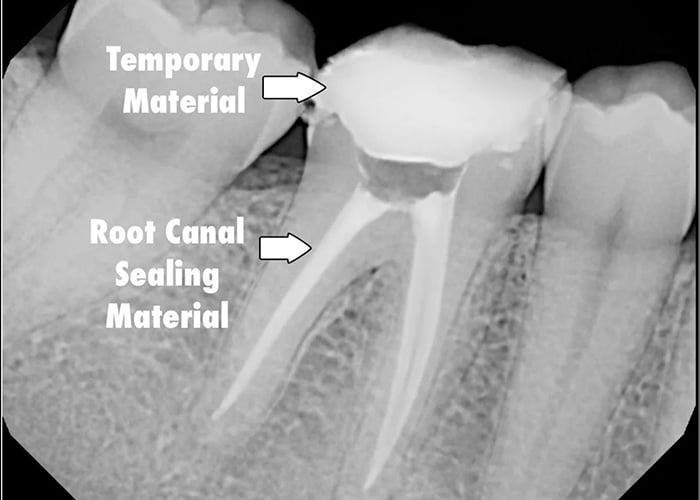Dental fillings are artificial materials that are used to restore decayed, broken, or damaged teeth. There are different options as of materials for dental fillings and each comes with its pros and cons.
What is a Dental Filling?
A filling is a treatment used to treat tooth damaged by decay. It restores the tooth back to its normal function and shape while preventing further decay. Dental filling is one of the most common procedures in the dental office. Most people need at least one filling in their lifetime. As long as you are maintaining a good brushing and flossing routine, there is no need to worry!
How Do I Know if I Need a Filling?
Depending on how big the cavity is, some people may feel sensitivity to hot/cold and chewing. However, some people may not experience any symptoms at all. So it is best to have your teeth checked by your dentist.
The dentist will use a small mirror and dental explorer to examine all the surfaces of each tooth to check for any discoloration and defects, then combine with the dental radiographs for the final diagnosis. The treatment will depend on the extent of damage and the type of filling you agree on.
At Dentist in Marrysville, we provide complimentary intra-oral photos. We take photos of your teeth and gum, and show them to you. Our patients will be engaged in the whole diagnosing process. We find it to be very effective to educate and to build up trust with our new patients.
Which Type of Filling is Best?
The right type of dental filling for you will depend on the extent of the repair and the cost.
- Gold fillings are strong, non-corrosive, and last the longest (15+ years with proper care). They are fabricated outside of the mouth and then cemented into place. They are much more expensive compared to other options, and requires multiple visits.
- Amalgam (silver) fillings are strong, sturdy, resistant to wear and relatively inexpensive. Due to their dark color, many individuals do not find them to be aesthetically pleasing, especially if they are towards the front teeth. In addition, they are more likely to expand and contract and cause cracks which decrease significantly the integrity of the tooth.
- Composite resin (tooth-colored) fillings look more natural because they can be closely matched to the color of your teeth. However, composite fillings are more expensive than silver amalgam filling, easily get stained just like teeth, and less durable. They do better in smaller (more conservative) fillings.
- Porcelain ceramic fillings, called inlays or onlays, are fabricated custom in a lab and then bonded to your tooth. They’re matched to your tooth color, resist staining, and very durable. A porcelain restoration generally covers most of the tooth. Their cost is similar to gold. Porcelain filling can wear the opposing teeth if the porcelain becomes rough
See more: Root Canal Treatment in Marrysville
Steps of a Dental Filling

A filling is a way to restore a tooth that has been damaged by decay back to its original shape and function. The first step is to remove the decayed tooth material. This is done with a drill. Next, the area is cleaned and prepared for the filling. A bonding agent may be used to help the filling material stick to the tooth. The next step is to place the filling material into the cavity. This can be done with a syringe or by hand, depending on the type of filling material used. Finally, the filling material is hardened with a light beam or chemical reaction.
What’s a Temporary Filling and Why Would I Need One?
Temporary fillings are used:
- For fillings that require more than one appointment.
- Following a root canal.
- To allow a tooth’s nerve to calm down if the pulp became irritated.
- If emergency dental treatment is needed (such as to address a toothache)
Temporary fillings are not meant to last. Contact your dentist as soon as possible to have a temporary filling replaced with a permanent one. Otherwise, the tooth might become infected or you could have other complications.

How Should I Care for My Teeth With Fillings?
You should follow good oral hygiene: brush with a fluoride toothpaste and floss at least once daily, visit your dentist regularly for cleanings and check-ups. If your dentist suspects that a filling might be cracked or is “leaking” (when the fillings and tooth structure don’t bond tightly to each other, this allows debris, saliva, and bacteria to seep down between them and causes decay), they will take X-rays to assess the situation. If you experience any of the following: extremely sensitive, sharp edge, crack in the filling, a piece of the filling is missing, or pain on chewing…call your dentist for an appointment.
Read more: The pros and cons of a dental bridge
Problems With Dental Fillings
Toothache and Sensitivity are 2 of the most common symptoms after fillings.
Tooth sensitivity following placement of a filling is common. A tooth may be sensitive to pressure, air, sweet, or temperature. These symptoms usually don’t last long and fade with time. Normally, the sensitivity resolves on its own within a few weeks. During this time, avoid those things that are causing the sensitivity. Pain relievers are generally not required but recommended for more comfort.
- If the sensitivity does not subside within a few weeks, your dentist may recommend a desensitizing toothpaste (Sensodyne) with fluoride, may apply a desensitizing agent to the tooth, or possibly suggest a root canal procedure.
- If you experience immediate pain and extra pressure when you bite down after getting your filling, it’s possible that the filling is too big. You will need to return to you dentist for bite adjustment.
- If the decay was very deep or close to the pulp (nerve) of the tooth, you may experience constant pain all the time and it keeps you up at night. This indicates the tooth may be infected. If this is the case, root canal therapy is required.
Sometimes people experience “referred” pain – pain or sensitivity in other teeth besides the one that received the filling. There is likely nothing wrong with your teeth. The filled tooth is simply passing along “pain signals” it is receiving to other teeth. This pain should go away in 1 to 2 weeks.
Fillings shouldn’t keep you away from smiling. Whether you need a filling now or in the future, you can feel confident about the process and what to expect from your appointment.



